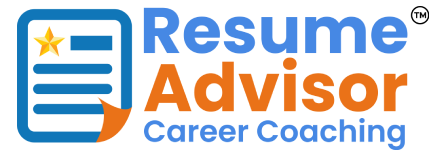
Let’s be real—resumes can be stressful. What do you include? How do you make it stand out? And perhaps most confusing of all: which format should you use? The good news is that most employers actually prefer one specific style—the reverse chronological resume.
If you’ve ever wondered why this format is so popular or how to make yours shine, you’re in the right place. In this guide, we’ll break down what it is, why it works so well, and how to create one that gets attention. Plus, we’ll show you how Resume Advisor, a career coaching firm, can help you take your resume from “just okay” to “absolutely hireable.”
What Is a Reverse Chronological Resume?
A reverse chronological resume is the most common resume format out there. Instead of starting with your oldest job, you list your most recent position first, then work your way backward.
Think of it as a highlight reel of your career journey—your current role gets the spotlight, and everything else follows in order.
This format is especially great if:
- You’ve been working in the same industry for a while
- You want to show steady career growth
- Your most recent roles are your most impressive
As The Balance Careers points out, it is the standard most recruiters expect to see.
Why Employers Love It
Hiring managers get stacks of resumes every day, so they don’t have time to hunt for your best experience. A reverse chronological resume makes life easy for them by putting your latest (and usually best) work front and center.
Here’s why it’s a favorite:
- It’s easy to read – Everything is laid out in a logical, predictable order.
- It highlights progress – Recruiters can see how you’ve grown over time.
- It’s ATS-friendly – Applicant Tracking Systems scan resumes better when they follow standard formats.
According to Indeed Career Guide, this format is the go-to choice for anyone with a consistent work history.
How to Structure a Reverse Chronological Resume?
So how do you actually build one? A strong reverse chronological resume usually includes:
1. Contact Info
At the very top, list your name, phone number, email, and LinkedIn profile. If Resume Advisor has helped optimize your LinkedIn, this section will shine even brighter.
2. Professional Summary
This is a quick snapshot of who you are and what you bring to the table. Keep it short and punchy.
Example:
"Results-driven marketing professional with 7+ years of experience leading digital campaigns that boosted engagement and revenue."
3. Work Experience
This is the heart of the reverse chronological resume. Start with your most recent job, then move backward. For each role, include:
- Job title
- Company name and location
- Dates of employment
- 3–5 bullet points highlighting achievements
Pro tip: Focus on accomplishments, not just tasks. Instead of “Managed social media accounts,” write “Increased Instagram engagement by 45% through targeted campaigns.”
4. Education
List your degrees or certifications, starting with the most recent.
5. Skills
Include a mix of hard and soft skills relevant to the job.
Who Should Use a Reverse Chronological Resume?
This format is perfect for:
- Mid-level professionals – who want to show career growth.
- Senior-level candidates – with a track record of leadership.
- Recent professionals – who may not have decades of experience but want to highlight their latest role.
If you’ve had a few gaps or are switching industries, a reverse chronological resume may not always be the best fit—but with some smart tweaks (and maybe some help from Resume Advisor), you can still make it work.
Mistakes to Avoid
Even though this format is straightforward, it’s easy to make missteps. Watch out for these:
- Overloading with details – Keep bullet points focused and impactful.
- Using vague language – “Responsible for projects” doesn’t say much. Show numbers and results instead.
- Forgetting consistency – Keep dates, fonts, and formatting neat.
Resume Advisor often helps clients polish these areas so their reverse chronological resume looks professional, clean, and ready for hiring managers.
Why Resume Advisor Can Help You Perfect It
You might think writing a reverse chronological resume is easy—but crafting one that actually lands interviews takes skill. That’s where Resume Advisor steps in.
Jonathan, the founder, works directly with every client to:
- Highlight achievements in a way that recruiters love
- Tailor your resume to the roles you’re applying for
- Make sure your resume is ATS-optimized
- Align your resume with your LinkedIn profile for a consistent personal brand
With Resume Advisor, you don’t just get a reverse chronological resume—you get a full career strategy.
Reverse Chronological Resume Example (Simplified)
Here’s a quick look at what the structure might look like:
Jane Doe
janedoe@email.com | (555) 555-5555 | LinkedIn.com/in/janedoe
Professional Summary
Customer service professional with 5+ years of experience delivering excellent client support and improving customer satisfaction scores.
Work Experience
Customer Service Supervisor | ABC Company | 2020 – Present
- Increased client retention rates by 20% by implementing new service protocols.
- Trained 10+ new employees, boosting team productivity.
Customer Service Associate | XYZ Inc. | 2017 – 2020
- Handled 50+ daily client inquiries with a 95% satisfaction rate.
- Collaborated with management to improve service scripts.
Education
Associate Degree in Business Administration – 2016
Skills
Customer service | Team leadership | CRM software | Communication
Extra Tips to Make Your Resume Pop
- Keep it one to two pages – Recruiters want concise, relevant details.
- Use strong action verbs – Words like “led,” “developed,” or “implemented” grab attention.
- Tailor it for every application – Small tweaks can make a big difference.
- Show growth – Each role should build on the one before it.
As Forbes highlights, customizing your resume to match job postings is one of the smartest strategies to land interviews.
Final Thoughts
The reverse chronological resume remains the gold standard for most job seekers—and for good reason. It’s easy to read, it highlights your most recent accomplishments, and it shows your career growth over time.
But if you really want yours to stand out, don’t just list job titles and responsibilities. Highlight your achievements, use numbers when you can, and keep things clear and professional.
And remember—if you want expert support, Resume Advisor can help you take your resume to the next level. With personalized coaching, resume writing, and job search strategies, you’ll feel confident knowing your resume not only looks great but also works hard to get you interviews.
So the next time you’re stuck wondering which format to use—go with the tried-and-true resume. It’s simple, it’s effective, and with the right strategy, it can open the door to your dream job.

